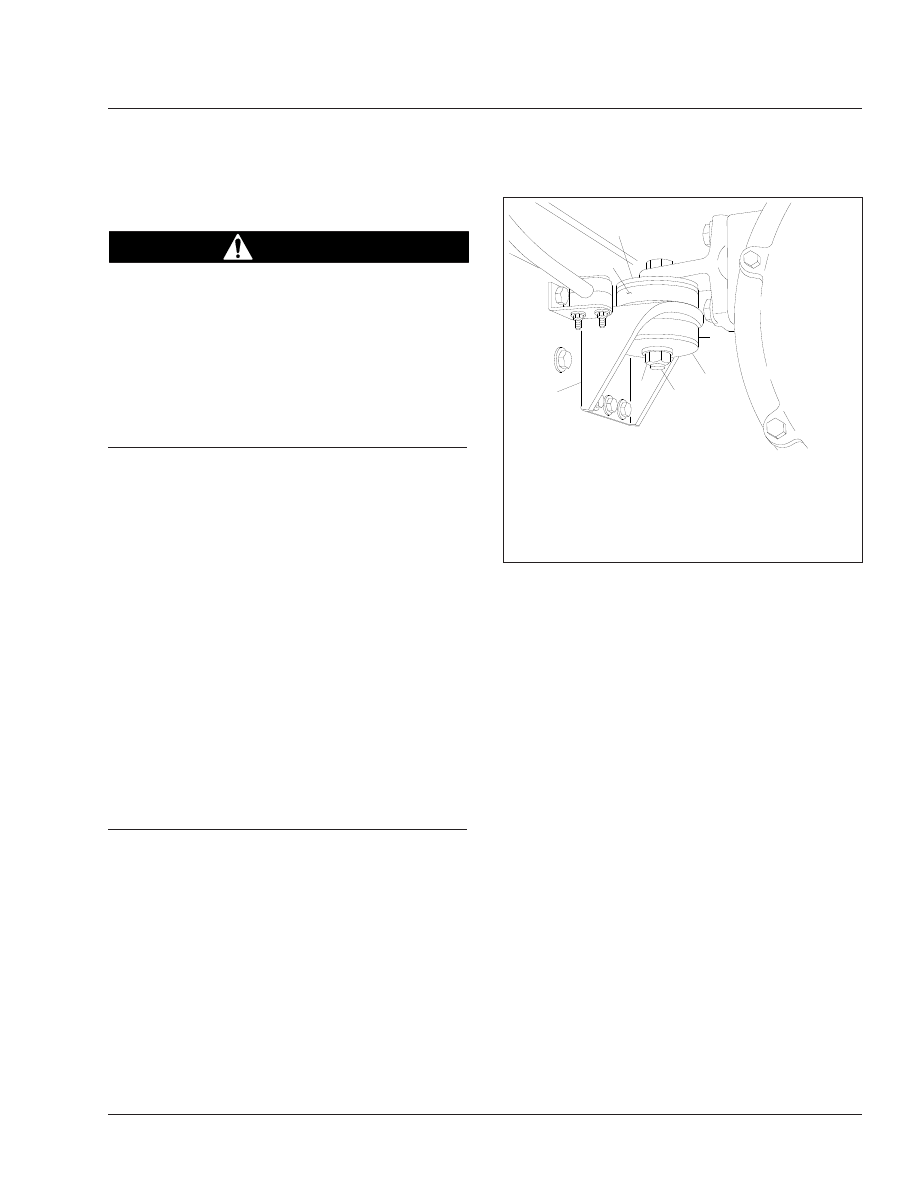Freightliner Columbia. Manual - part 6

Safety Precautions
DANGER
When working on the vehicle, shut down the en-
gine, set the parking brake, and chock the tires.
Before working under the vehicle, always place
jack stands under the frame rails to ensure the
vehicle can not drop. Failure to follow these steps
could result in serious personal injury or death.
01–01 Engine Support
Fasteners Check
Front and rear engine supports for vehicles built from
January 2007 require no periodic maintenance.
Mounts should be inspected when the engine is re-
moved for service. For vehicles manufactured prior to
January 2007, perform the following check.
Check the rear engine support fasteners (see
Ref. 4) for tightness. Tighten the 3/4-inch fasteners
215 to 265 lbf·ft (292 to 359 N·m).
Check the front engine support fasteners for tight-
ness. Tighten the 5/8-inch fasteners 125 lbf·ft (170
N·m).
NOTE: At engine overhaul, and whenever the
engine has been removed, inspect the lower
and upper isolators (Refs. 1 and 6), and replace
them if they are worn. See Group 01 of the
Columbia® Workshop Manual for procedures.
01–02 Engine Drive Belt
Inspection
Worn or loose drive belts may cause premature
bearing failure or engine overheating. Excessive ten-
sion, or too little tension on the belt may result in ex-
cessive and premature belt wear. Poly-V belts, or
serpentine belts, are retained by a belt tensioner that
requires no tension adjustment. Replace the drive
belt if any conditions described in "Visual Inspection"
are found. V-belts are installed as individual belts,
and as matched sets. When replacing matched sets
of belts, always replace both belts at the same time.
Matched belts must be from the same manufacturer.
To inspect a belt, gently twist it to view the belt side-
walls and bottom. Inspect all belts for the following
conditions, then perform the "Belt Tension Inspec-
tion."
Visual Inspection
1.
Inspect the belt for glazing. See
, Ref. A.
Glazing is represented by shiny sidewalls, and is
caused by friction created when a loose belt slips
in the pulleys. It can also be caused by oil or
grease on the pulleys.
2.
Check the belt for ply separation. See
Ref. B. Oil, grease, or belt dressing can cause
the belt to fall apart in layers. Repair any oil or
coolant leaks that are affecting the belts before
replacing the drive belts. Do not use belt dress-
ing on any belt.
3.
Check the belt for a jagged or streaked sidewall.
See
, Ref. C. Jagged or streaked sidewalls
are the result of foreign objects, such as sand or
gravel in the pulley, or a rough pulley surface.
4.
Check for tensile breaks (breaks in the cord
body). See
, Ref. D. Cuts in a belt are usu-
ally caused by foreign objects in the pulley, or by
prying or forcing the belt during removal or instal-
lation.
f220047a
1
2
3
4
5
6
2
10/05/94
1.
Lower Isolator
2.
Engine Support Washer
3.
3/4–10 Capscrew
4.
3/4–10 Hexnut
5.
Engine Mount
6.
Upper Isolator
Fig. 1, Engine Rear Mount
Engine
01
01/1